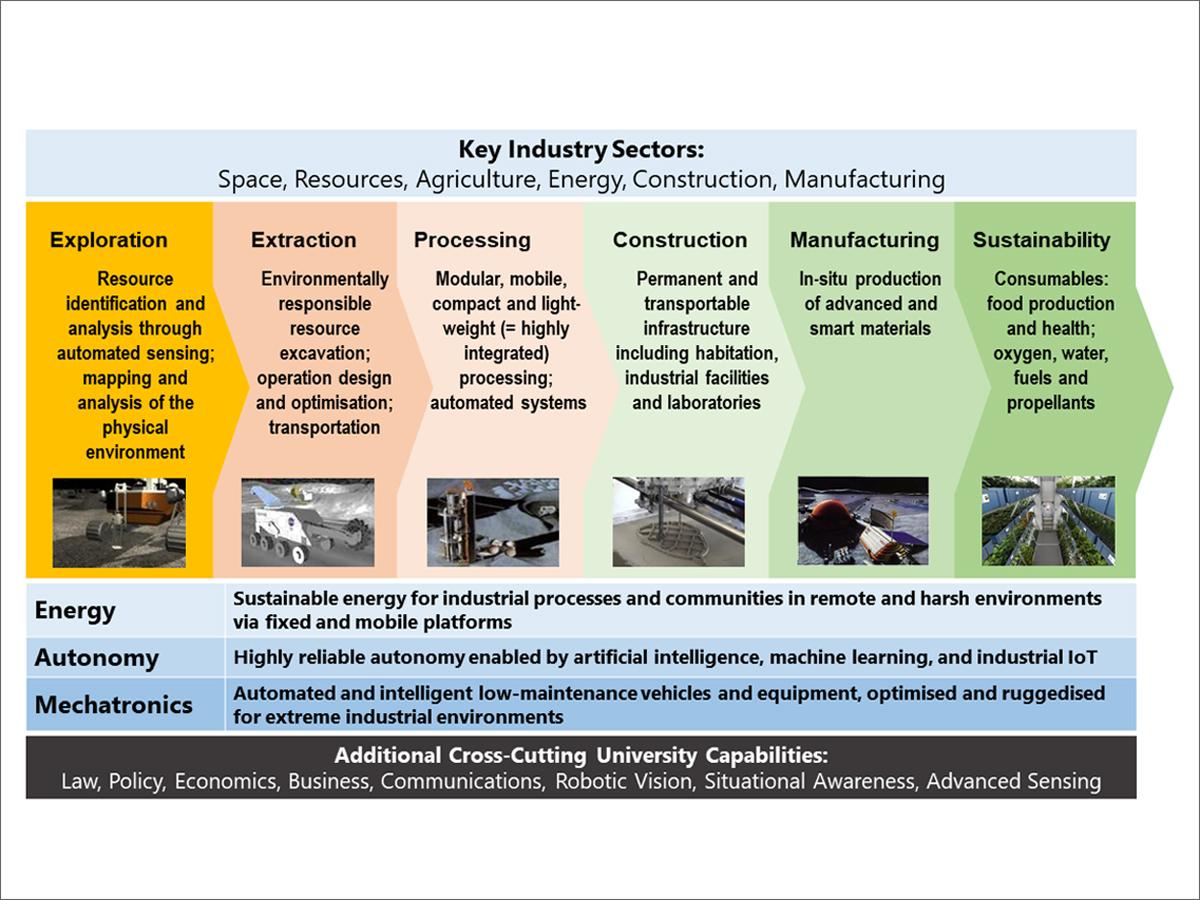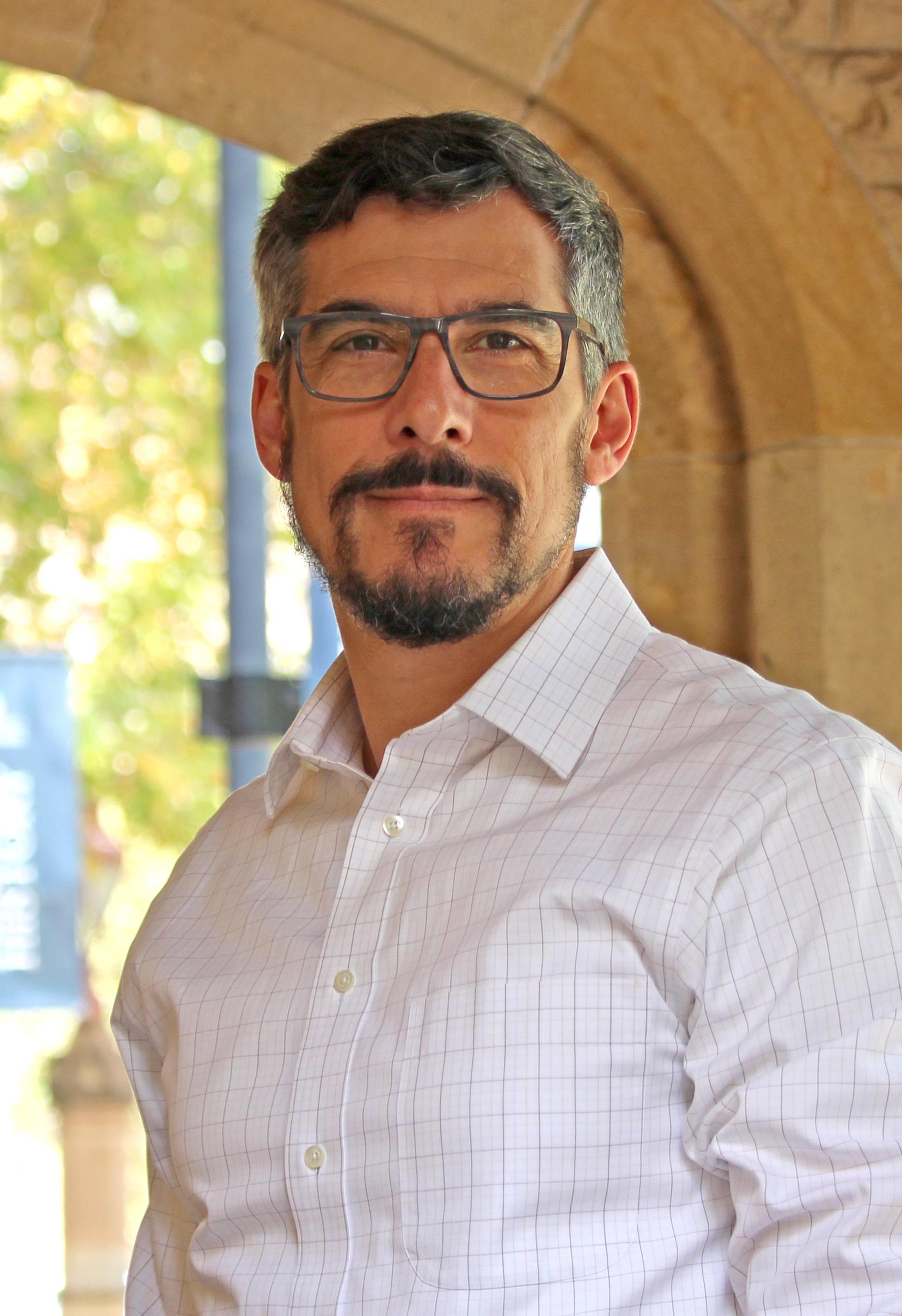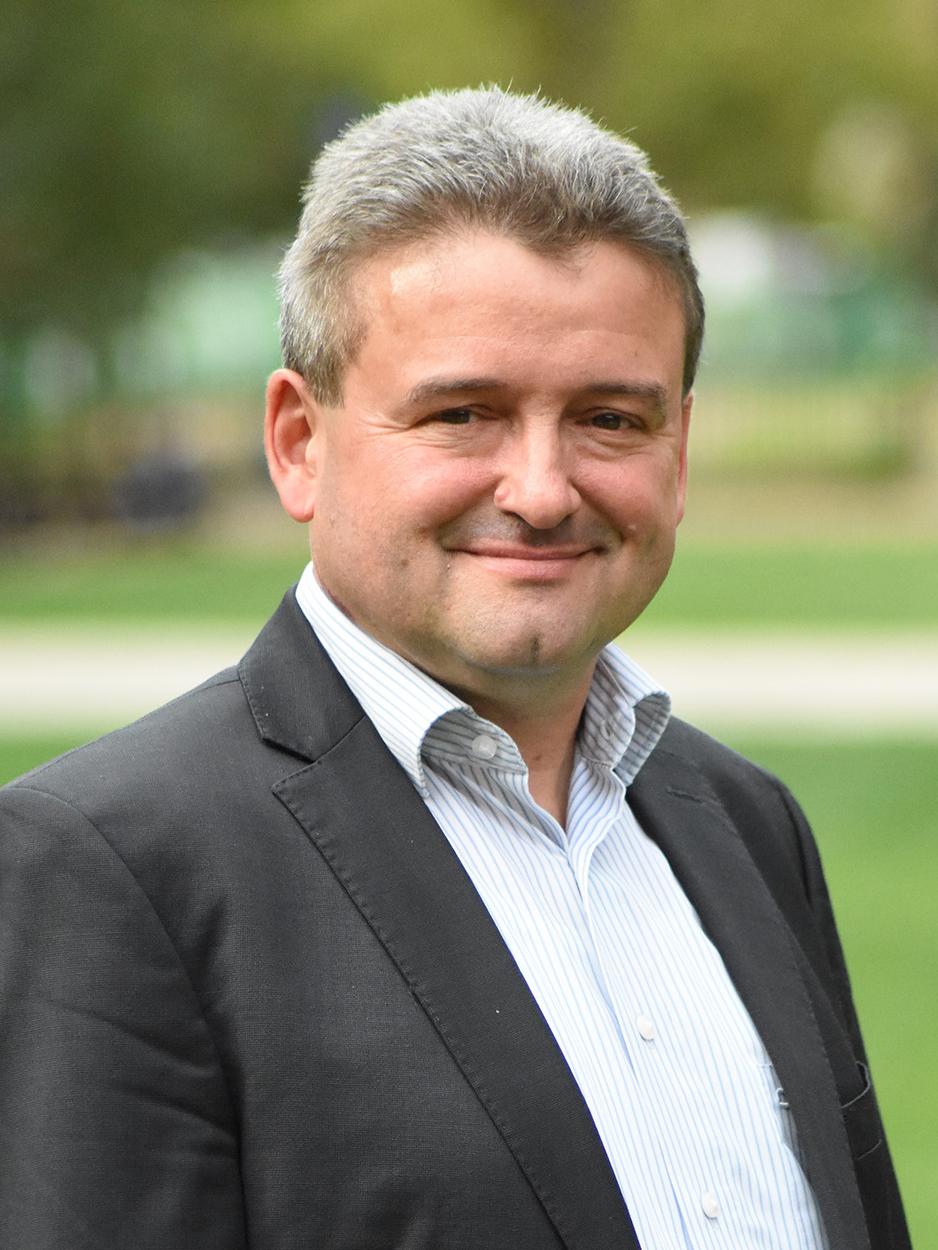Centre Structure
The Centre is built around nine space research and education modules that directly align with the broader ISRU value chain as proposed by agencies such as NASA.

Diagram showing the six operational and three supporting modules of the ATCSR. Image Source: NASA.
Download diagram
The six operational modules align with the core concepts of ISRU looking to utilise the available resources to maintain long term space missions in an efficient, effective and sustainable way. In addition the three enabling modules underpin the space adapted technology solutions critical to the success of all of the operational modules.
Using these modules as a framework, the ATCSR enables space research and education to support both the translation of current terrestrial practices and technologies as well as the development of new ones.
Operational modules
The 6 operational modules cover several key industry sectors, including space, resources, agriculture, energy, construction and manufacturing.
| 1. Exploration | Resource identification and analysis through automated sensing; mapping and analysis of the physical environment | ||||
| 2. Extraction | Environmentally responsible resource excavation; operation design and optimisation; transportation | ||||
| 3. Processing | Modular, mobile, compact and light-weight (= highly integrated) processing; automated systems | ||||
| 4. Construction | Permanent and transportable infrastructure including habitation, industrial facilities and laboratories | ||||
| 5. Manufacturing | In-situ production of advanced and smart materials | ||||
| 6. Sustainability | Consumables: food production and health; oxygen, water, fuels and propellants | ||||
The operational modules fit into the University of Adelaide capabilities of:
|
Energy Sustainable energy for industrial processes and communities in remote and harsh environments via fixed and mobile platforms |
Autonomy Highly reliable autonomy enabled by artificial intelligence, machine learning and industrial IoT |
Mechatronics Automated and intelligent low-maintenance vehicles and equipment, optimised and ruggedised for extreme industrial environments |
|||
Additional cross-cutting university capabilities include law, policy, economics, business, communications, robotic vision, situational awareness and advanced sensing.
Leadership

The ATCSR is lead by Associate Professor John Culton, the Centre’s Director.
John has extensive international experience within defence policy, security cooperation, space, and intelligence sectors, as a senior diplomat and US Department of Defense leader. Most recently, John has been focused on the role of technology, policy, and law in the coming commercial development of the Earth-Moon system.

Professor Volker Hessel is the ATCSR Research Director.
Volker is an internationally recognised research leader in the field of flow chemistry and process intensification and their application to space-based industries such as continuous processing, manufacturing and pharmaceutical engineering.
In addition to John and Volker, each module is led by a University of Adelaide Chief Investigator with strong links to both the research community and industry.
Be involved
The Centre is actively seeking partners interested in realising the ATCSR's vision for future sustainable resource exploration utilisation – both in Space and on Earth.
